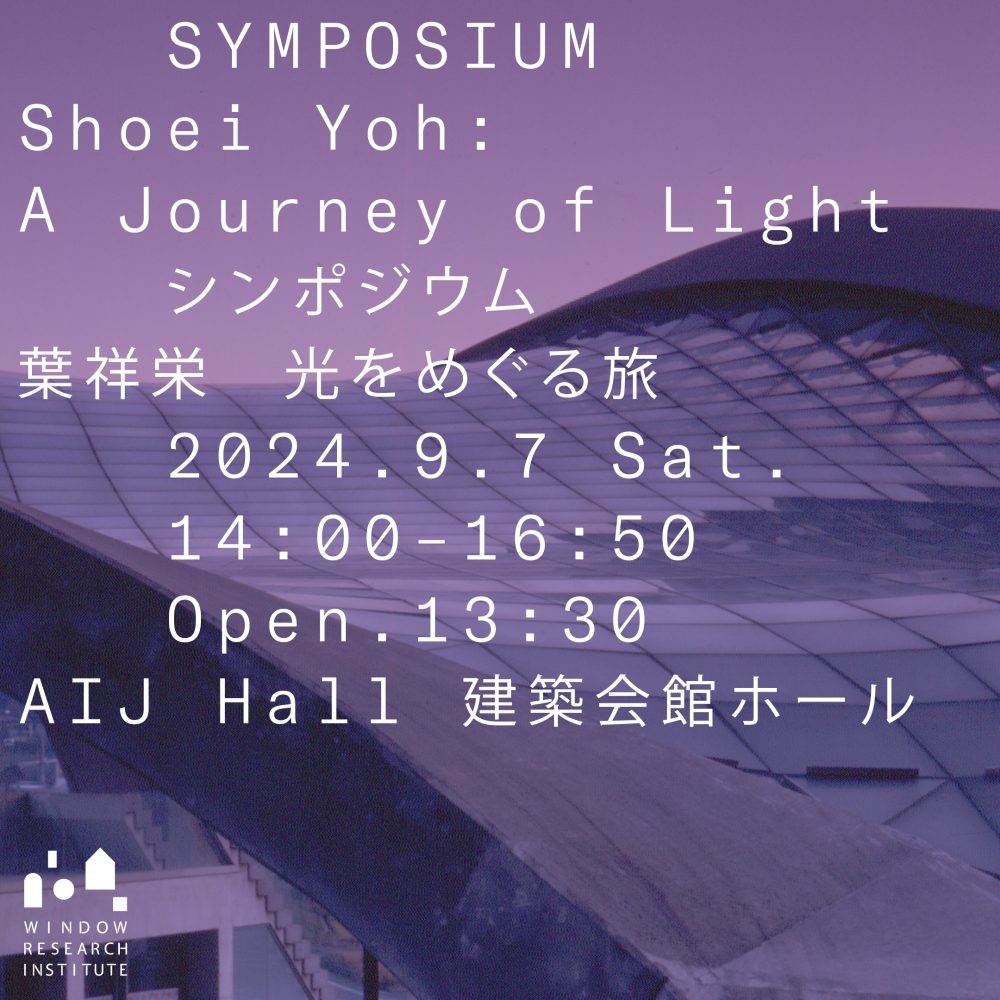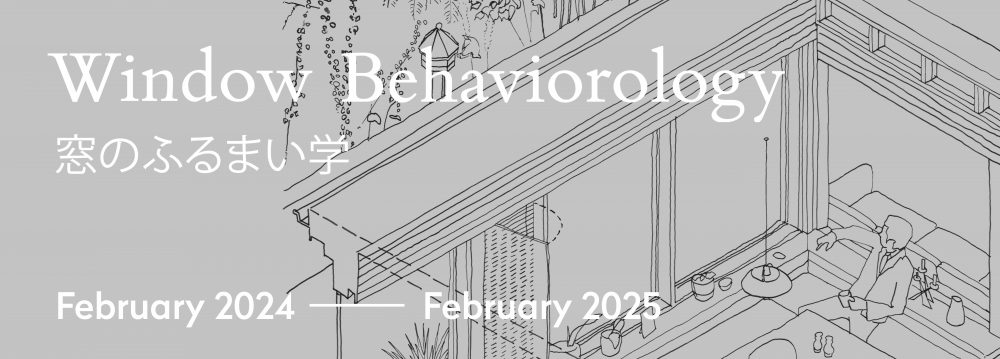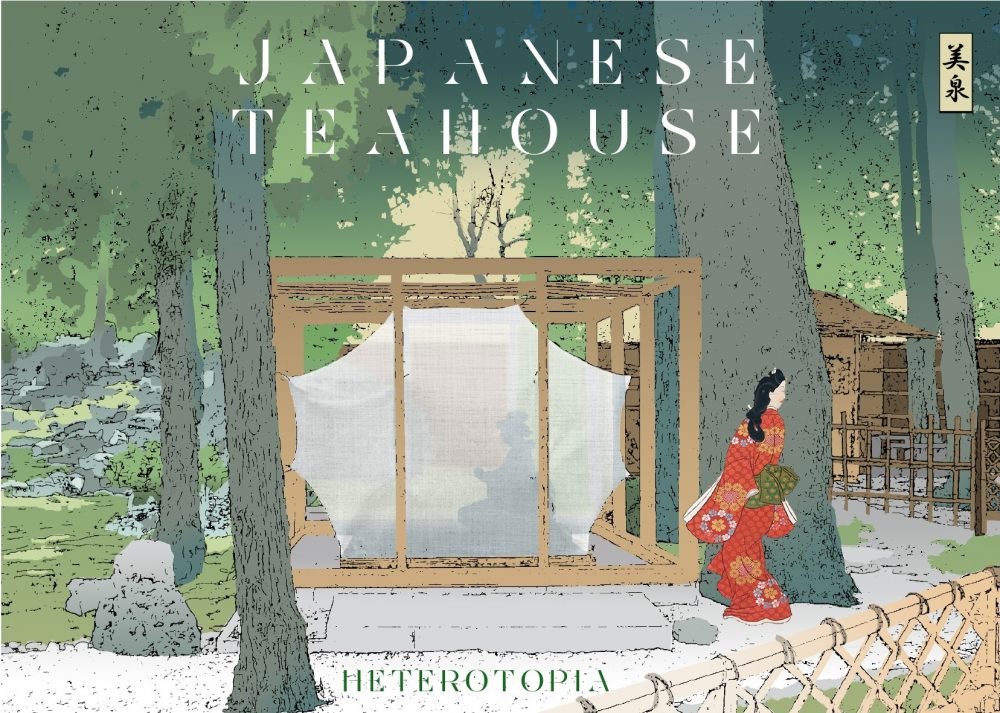The Window: A Journey of Art and Architecture through Windows at the Marugame Genichiro-Inokuma Museum of Contemporary Art
02 Sep 2020
The Window Research Institute will be holding an exhibition titled The Window: A Journey of Art and Architecture through Windows together with the Marugame Genichiro-Inokuma Museum of Contemporary Art (MIMOCA); The MIMOCA Foundation; and The National Museum of Modern Art, Tokyo (MOMAT) from October 13, 2020 to January 11, 2021.
The show sets out to convey the inexhaustible and multifaceted appeal of the window through works of architecture and art that transcend generations and time. This show was previously held at the MOMAT and will be traveling to the MIMOCA this time.
-

Wolfgang Tillmans, windowbox (47-37), 2000, Collection of WAKO WORKS OF ART
About this exhibition
Windows have long had a close relationship to painting, cutting out pieces of the world around us by means of a square frame and providing us with new points of view. A similar interest has been carried on in other media, including photography, film, and installation, and continues to the present day.
Moreover, in the field of architecture, the development of various devices and techniques, and aesthetic considerations have led to the creation of windows with a diverse range of forms throughout history and all over the world.
This exhibition assembles a group of manifold works dealing with windows—from paintings by Bonnard and Klee to contemporary art. It also includes invaluable drawings by architects including Le Corbusier and Kahn and introduces the genre-spanning world of windows. Everyone is encouraged to come witness the rich variation of window-themed creations.
-

[Left] Roman Signer, Window Shutters, 2012, Collection of the Artist, Photo: Michael Bodenmann © Roman Signer, Courtesy Hauser & Wirth [Right] James Stirling, Michael Wilford, and Associates, Wissenschaftszentrum, Berlin, Germany: window detail, 1979-1987, Collection Centre Canadien d’Architecture/ Canadian Centre for Architecture, Montréal, James Stirling/Michael Wilford fonds, Canadian Centre for Architecture
Exhibition Highlights
The exhibition will consist of 11 chapters featuring up to 100 works of various genres, including painting, photography, printing, film, and installation art.
1–2 The impressive scene from Buster Keaton’s Steamboat Bill, Jr. serves as an apt introduction to the exhibition. Following this, the second chapter presents a spectacular timeline by the Tohoku University Taro Igarashi Lab that lays out the history of windows in architecture and art across the world. Window drawings made by architects such as Le Corbusier can be viewed together with rare window-related books from the 1600s–1700s.
3–4 The following chapters, “Windows in 20th-Century Art I, II,” feature works that visually depict windows and abstract pieces, such as a painting made up of square forms. Windows depicted in the paintings by Pierre Bonnard and photographs by Wolfgang Tillmans present us with a world beyond the room. On the other hand, as drawn in the works of Paul Klee, the squares and grids in abstract paintings bear a close resemblance to windows: their colors, shapes, and compositions alone create a three-dimensional space on a flat surface.
5–8 These chapters introduce works that depict windows as a boundary between the closed environment and the world outside. Here, we present Ikko Narahara’s Domains, a series of photographs that feature a men’s monastery and a women’s prison; Xijing Men’s installation work, Chapter 3: Welcome to Xijing—Xijing Immigration Service, which is about an immigration service and the fictitious city-state of Xijing; the video work From My Window by Józef Robakowski, one of Poland’s preeminent artists, which depicts the goings-on in a public square that was visible from the window of the artist’s ninth-floor, high-rise apartment over a period of 22 years.
9 In the twentieth century, screens such as TV, video, and computers have taken the place once held by paintings as a window to another world. This chapter presents works including Shigeko Kubota’s video sculpture and JODI’s video work that depicts a number of folders and files on a desktop.
10 Windows provide functions that are essential to our daily lives, such as bringing in air and light and expelling humidity, heat, and the cold. It is somehow humorous when we strip windows of these functions and look at them purely as objects that open and close. This chapter is presented as “The Kinematics of Windows,” featuring the whimsical work of the art unit THE PLAY as well as works by Swiss giant Roman Signer.
11 The last chapter features pinhole camera works by Nobuo Yamanaka; Takashi Homma’s Camera obscura — thirty-six views of mount fuji, which is made with the same method used by Yamanaka. If you make a small hole on a wall of a dark room, the light that passes through the hole will produce an image of the scene outside the room on the opposite wall, creating a virtual window.
-

[Left] Le Corbusier, Interior sketch — window, 20 Century, Collection Centre Canadien d’Architecture/ Canadian Centre for Architecture, Montréal; © F.L.C./ ADAGP, Paris & JASPAR, Tokyo, 2020 G2287 [Right] Ryusei Kishida, Reiko, Five Years Old, 1918, The National Museum of Modern Art, Tokyo
-

[Left] Paul Klee, Abstraction with Reference to a Flowering Tree, 1925, The National Museum of Modern Art, Tokyo [Right] JODI, My%Desktop OSX 10.4.7, 2006, Collection of the Artist
Programs
Galley talks (Japanese-only) and workshop may be held depending on the situation with COVID-19. See MIMOCA’s website for latest information.
Press images
Visit MIMOCA’s press page (Japanese-only) to view and request press images.
https://www.mimoca.org/ja/press/
The Window: A Journey of Art and Architecture through Windows
Venue: MIMOCA (Hamamachi 80-1, Marugame-shi, Kagawa, Japan)
Dates: October 13, 2020–January 11, 2021
Hours: 10:00–18:00 (Admission until 30 minutes before closing time)
Closed: Mondays (except 23 November and 11 January, 2021), Tuesday, 24 November and 25–31 December, 2020
Admission: Adults ¥950, Students (college, university) ¥650 *Ticket valid for admission to Permanent Collection, Free admission for under 18 years old, high-school or below/Marugame residents of over 65 years of age/Disability Certificate holders and their caregiver (up to one person)
Organized by: Marugame Genichiro-Inokuma Museum of Contemporary Art (MIMOCA), The MIMOCA Foundation, The National Museum of Modern Art, Tokyo, Window Research Institute
Subsidized by The Swiss Arts Council Pro Helvetia
Supported by Embassy of Switzerland in Japan and the Polish Cultural Institute in Japan
Academic Adviser: Taro Igarashi (Professor, Tohoku University/ Architecture Historian and Critic/ Supervisor for Windowlogy)
Website: www.mimoca.org/en/
Please note that there may be further delays, cancellations or change of contents without notice, depending on the situation with COVID-19. See MIMOCA’s website for the latest information.
Inquiries about this exhibition
MIMOCA, The MIMOCA Foundation
Exhibition contact: Madoka Matsumura Press contact: Miyo Okumoto
E-mail. press@mimoca.org
Inquiries about the Window Research Institute
E-mail. info@wri.or.jp







